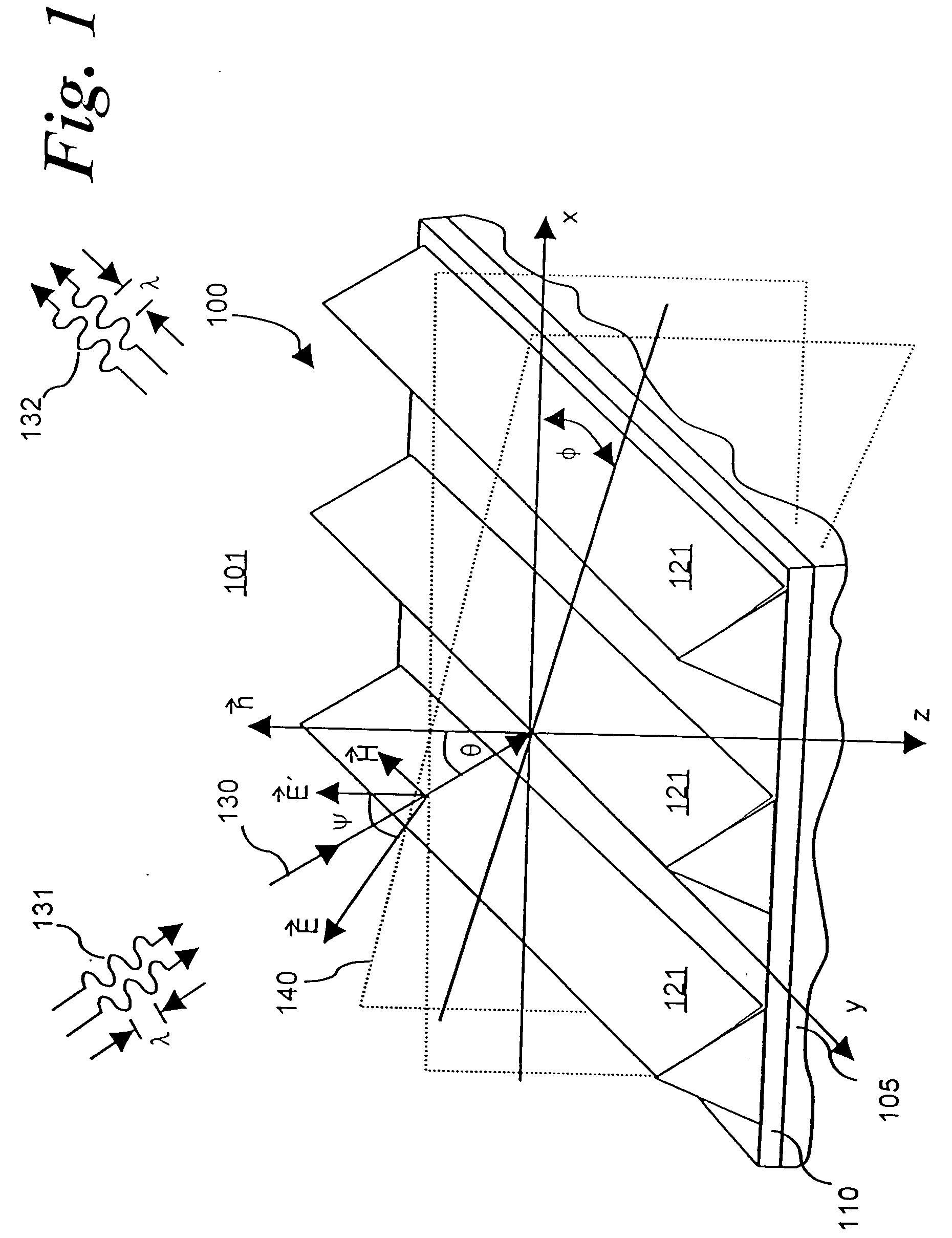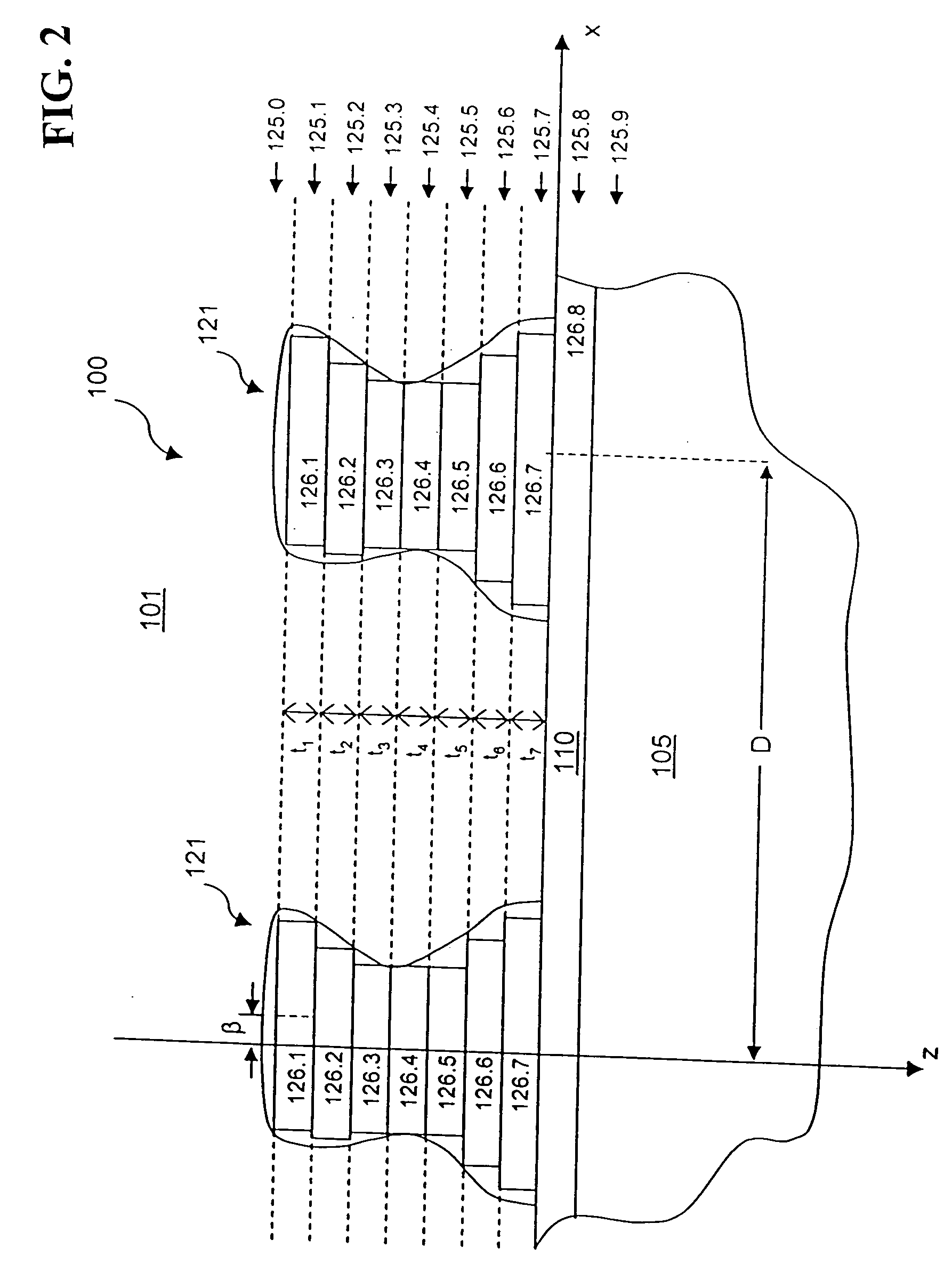Caching of intra-layer calculations for rapid rigorous coupled-wave analyses
a coupled-wave analysis and intra-layer calculation technology, applied in the direction of optical radiation measurement, instruments, spectrometry/spectrophotometry/monochromators, etc., can solve the problems of not providing profile information, limiting the method to planar surfaces, and difficult to achieve vertical sidewalls, etc., to reduce the computation time of rigorous coupled-wave analyses
- Summary
- Abstract
- Description
- Claims
- Application Information
AI Technical Summary
Benefits of technology
Problems solved by technology
Method used
Image
Examples
Embodiment Construction
The method and apparatus of the present invention dramatically improves the performance and efficiency for metrology of profiles of one-dimensionally or two-dimensionally repeating, regularly-spaced series of structures by reducing the computation time required for RCWA computations by pre-processing and caching intra-layer information and incident-radiation information, and using the cached intra-layer and incident-radiation information for RCWA calculations.
Section 1 of the present Detailed Description describes apparatus and methods for the acquisition of diffraction data from one-dimensionally and two-dimensionally repeating, regularly-spaced series of structures using optical metrology.
Section 2 of the present Detailed Description describes the mathematical formalism for RCWA calculations for the diffraction of TE-polarized incident radiation from a periodic grating. Definitions of the variables used in the present specification are provided, and intra-layer Fourier-space ...
PUM
 Login to View More
Login to View More Abstract
Description
Claims
Application Information
 Login to View More
Login to View More - R&D
- Intellectual Property
- Life Sciences
- Materials
- Tech Scout
- Unparalleled Data Quality
- Higher Quality Content
- 60% Fewer Hallucinations
Browse by: Latest US Patents, China's latest patents, Technical Efficacy Thesaurus, Application Domain, Technology Topic, Popular Technical Reports.
© 2025 PatSnap. All rights reserved.Legal|Privacy policy|Modern Slavery Act Transparency Statement|Sitemap|About US| Contact US: help@patsnap.com



